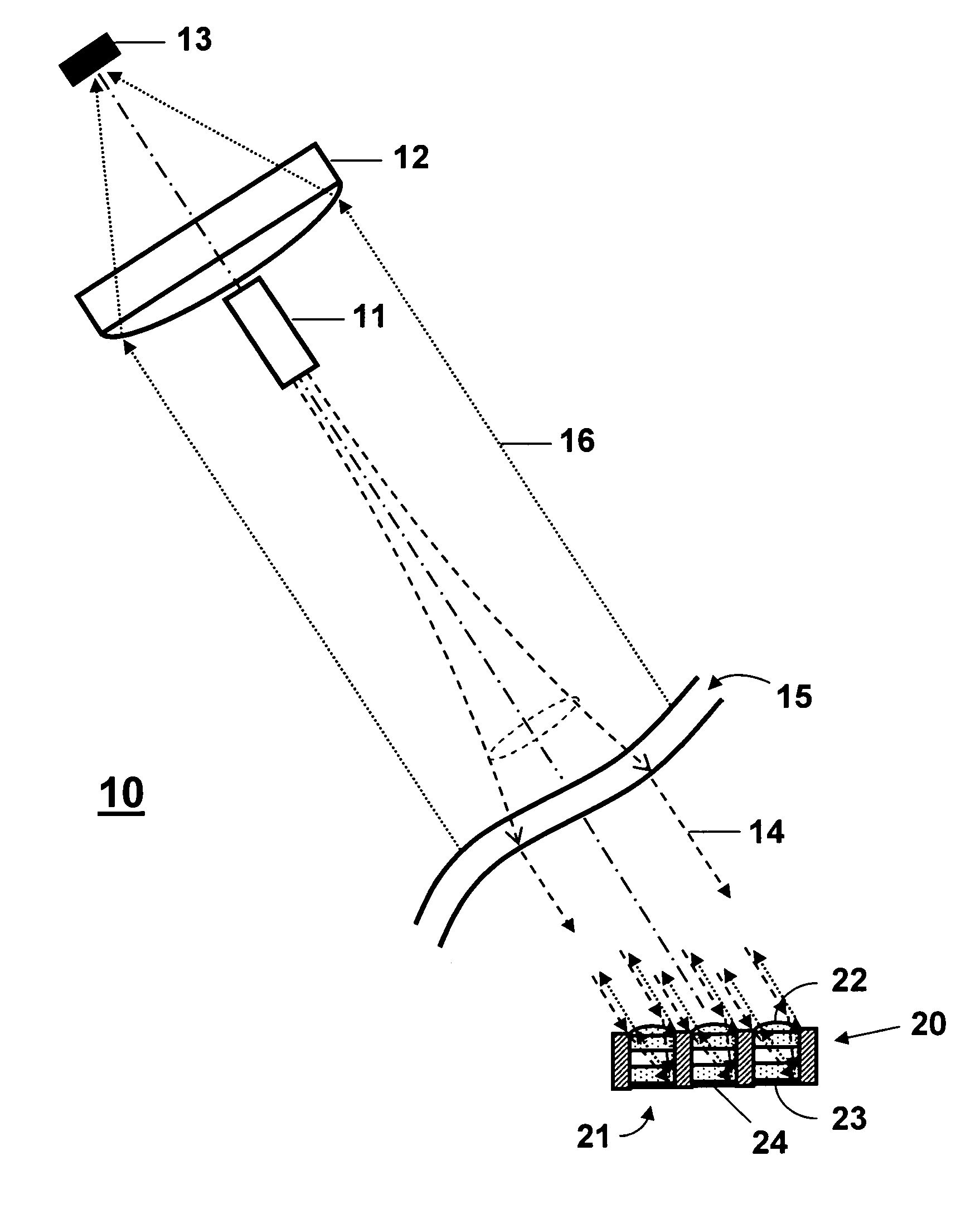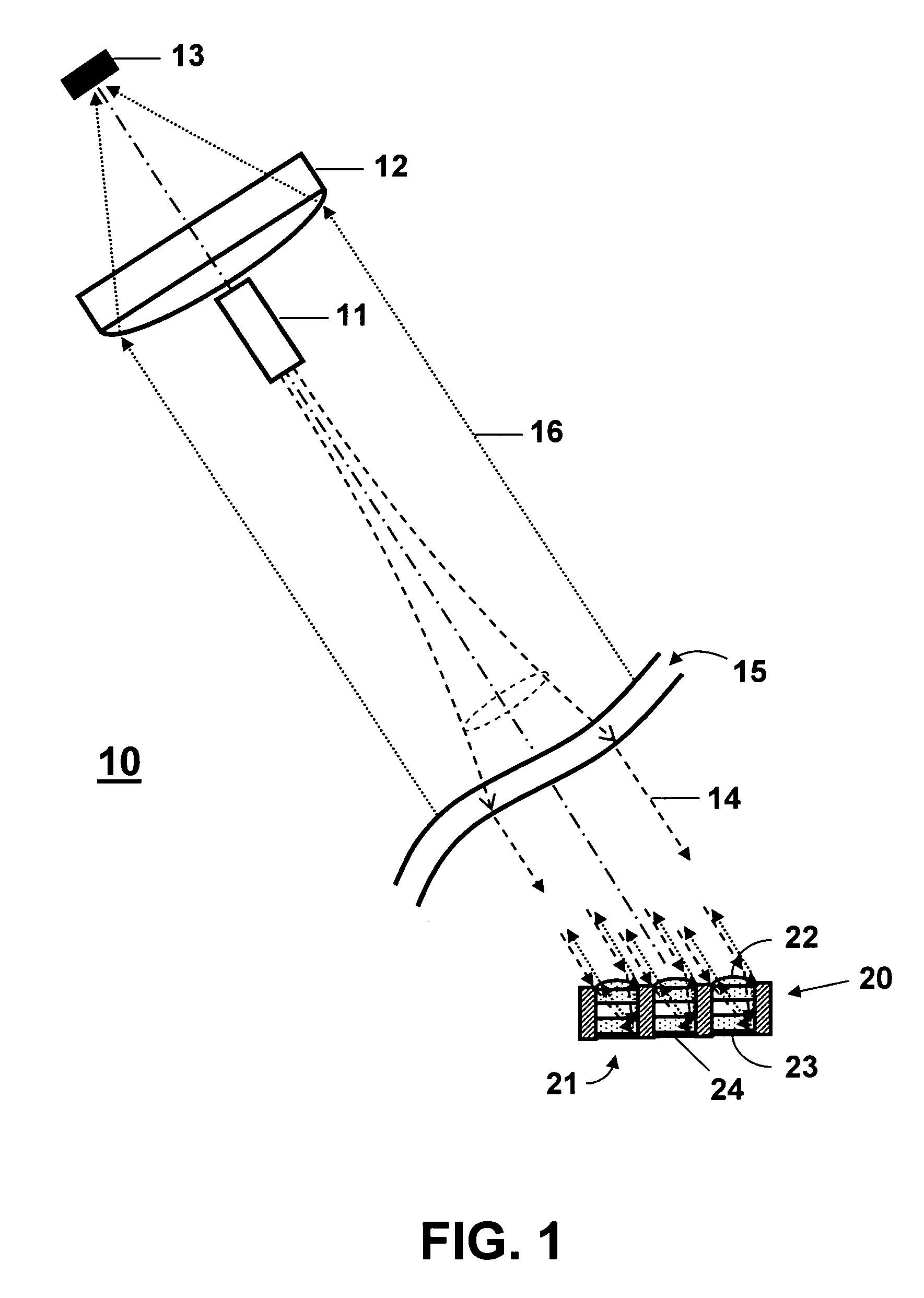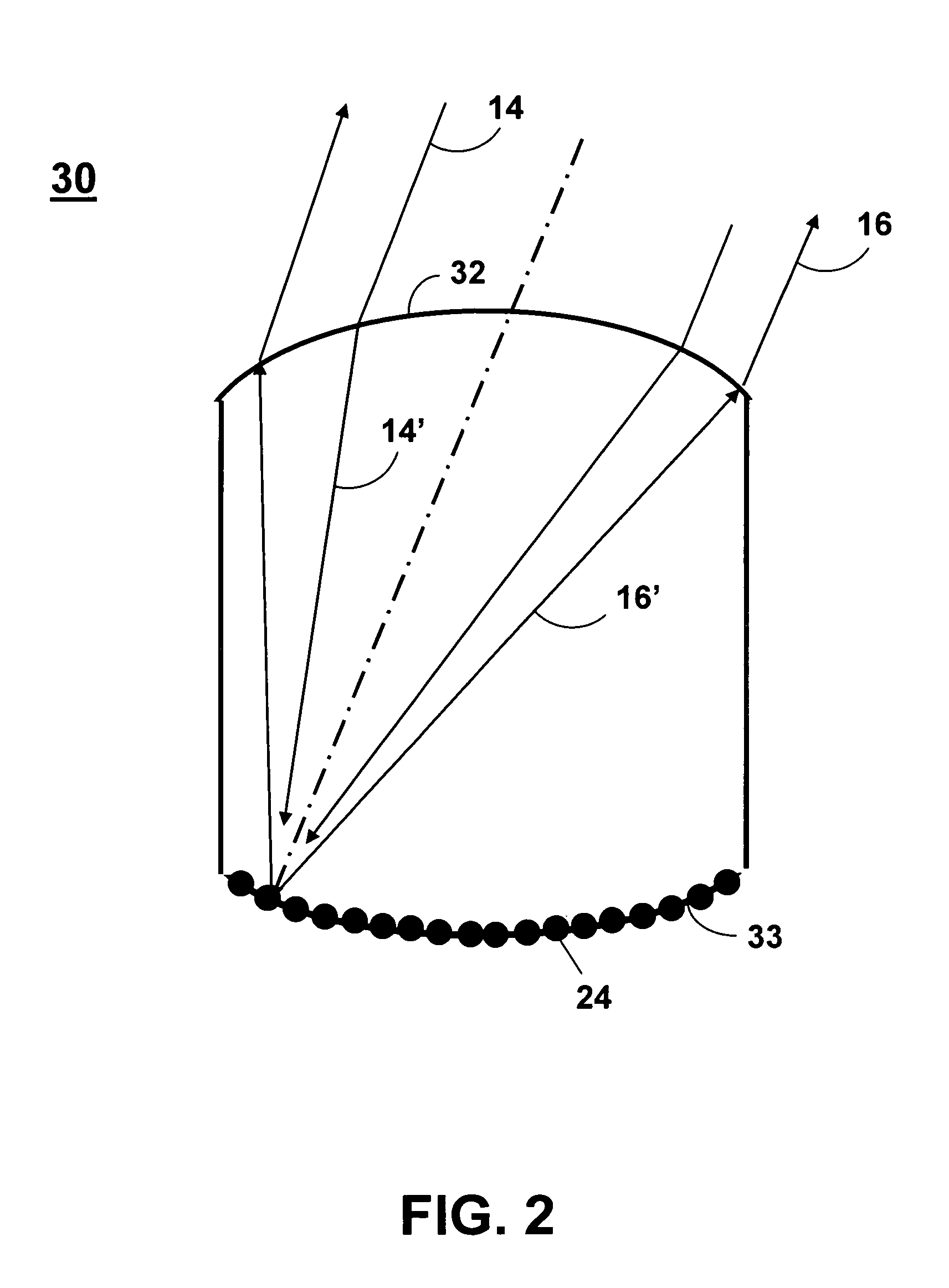Laser remote sensing of backscattered light from a target sample
a target sample and laser remote sensing technology, applied in the field of laser remote sensing, can solve the problems of inconvenient sample preparation, and unable to detect backscattered light in a direction that is not directional, and the technique requires little or no sample preparation
- Summary
- Abstract
- Description
- Claims
- Application Information
AI Technical Summary
Benefits of technology
Problems solved by technology
Method used
Image
Examples
Embodiment Construction
[0020]In FIG. 1 is shown a schematic illustration of a laser remote sensing apparatus 10, comprising a laser source 11, a sensing optic 20, a collection telescope 12, and a spectrally-resolved detector 13. The apparatus 10 can be used to obtain SERS or fluorescence measurements of molecules that are on or within a depth of focus of the back surface 23 of the distant sensing optic 20.
[0021]For SERS measurements, the laser 11 can provide a monochromatic light source that has high power and frequency, and is not absorbed in the propagating atmosphere. Preferably the laser light has a narrow bandwidth and propagates with low divergence. For example, the laser 11 can be a high-power visible or near-infrared laser. For laser-induced fluorescence, the laser can be a monochromatic laser at a known excitation wavelength of a sample molecule. Alternatively, the laser can be a tunable laser that can be tuned over a broad frequency range, to enable excitation of a sample comprising unknown spec...
PUM
 Login to View More
Login to View More Abstract
Description
Claims
Application Information
 Login to View More
Login to View More - R&D
- Intellectual Property
- Life Sciences
- Materials
- Tech Scout
- Unparalleled Data Quality
- Higher Quality Content
- 60% Fewer Hallucinations
Browse by: Latest US Patents, China's latest patents, Technical Efficacy Thesaurus, Application Domain, Technology Topic, Popular Technical Reports.
© 2025 PatSnap. All rights reserved.Legal|Privacy policy|Modern Slavery Act Transparency Statement|Sitemap|About US| Contact US: help@patsnap.com



